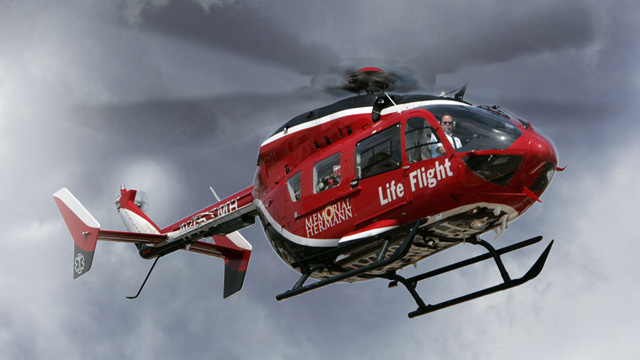Injury is the leading cause of death in children and youth and the Red Duke Trauma Institute and Children’s Memorial Hermann Hospital encourage parents and teachers to follow safe precautions to protect students during this school year.
Playground Hazards
Playground accidents are one of the leading causes of injury to children in elementary schools. Each year in the United States, more than 200,000 children receive emergency department care for injuries that occurred on playground equipment.
Strangulation is a top hazard on playgrounds and can easily happen when a child’s loose clothing or jewelry gets caught on equipment or a head gets stuck between climbing bars. Falls and fractures are another prime source of injury on the playground and can be caused by jumping off of swings or equipment, falling from climbing bars, riding with parents or friends down slides, running and more.
- All children on the playground must have the undivided attention of an adult supervisor who is in reach of the child and can get to them quickly in need of help.
- Check that equipment is properly maintained and the grounds are cleared of trash and broken bottles.
- Ensure adequate cushioning on the grounds.
- Do not allow children to run, push or shove.
- Children should wear fitted clothing with no jewelry or loose strings and closed toe shoes.
Transportation to & From School
School Bus Safety
According to the National Highway Traffic Safety Administration (NTSA), school buses are the safest mode of transportation to carry children to and from school. However, approximately 24 school-age children die in school bus related traffic accidents each year.
- While waiting for and exiting the school bus, children should remain off of and away from the street.
- Once on the bus, the child should find a seat and remain seated throughout the ride, keeping the aisles clear and staying seated until the bus has stopped completely at the destination.
- Children must keep their head, arms, hands, and legs in the bus, not out the window.
- Always talk quietly to the person next to you as loud noises can distract the bus driver.
Pedestrian Safety
- If the child is walking to school, it is important that parents know the route. Walk the route with the child showing them how to remain safe.
- Children should cross the street with an adult until they are at least 10 years old. Look both ways (left-right-left) before crossing the street.
- Cross the street at corners, always using traffic signals and crosswalks. Do not cross against the light, even if there are no cars coming.
- Never run out into the streets or cross in between parked cars.
- Make sure they always walk in front of the bus where the driver can see them.
Bicycle Safety
- Children should always wear a bicycle helmet that fits them well with the straps fastened no matter how short or long the ride. If the helmet is too large or too small on the child, it will not provide the proper protection they need in the event of a fall. Also, make sure the helmet meets the standards set by the Consumer Product Safety Commission (CPSC) and has a CPSC sticker.
- Review bicycle road and traffic rules with children.
- Know your child’s route before they take off on a ride.
- Wear bright colored clothing to increase visibility.
- Never wear headphones while riding a bike; they impair your ability to hear what is going on around you.
Riding in Cars
Children
- Make sure that carpools or vehicles that your child may ride in have the proper seat and safety belts.
- Your child should ride in a belt-positioning booster seat until the vehicle's seat belt fits properly (usually when the child reaches about 4' 9" in height and is between 8 to 12 years of age). This means that the child is tall enough to sit against the vehicle seat back with her legs bent at the knees and feet hanging down and the shoulder belt lies across the middle of the chest and shoulder, not the neck or throat; the lap belt is low and snug across the thighs, and not the stomach.
- All children younger than 13 years of age should ride in the back seat of vehicles.
Teens
- Motor vehicle crashes are the leading cause of death for children ages 15-19.
- Encourage safe driving with your teenagers and encourage them to only ride with friends who also practice safe driving.
- Know who your children are riding with.
- All passengers should wear a seat belt.
- Limit the number of teen passengers in one vehicle. The more passengers, the more distraction to the driver.
- Do not allow your child to engage in eating, drinking, cell phone conversations or texting while driving.
- Encourage your child to check in when leaving and arriving at destinations.
Heavy Backpacks
Many children are carrying backpacks that are far too heavy for them and are thus more vulnerable to injuries. Overloaded backpacks can cause back problems in children and also increase the risk of falling.
- Make sure your child’s backpack is no more than 10% of their body weight when filled with their books.
- Tighten the shoulder and hip straps to fit them snugly.
Contact Us
For information on Injury Prevention, email our Injury Prevention Coordinators at traumaprevention@memorialhermann.org.
